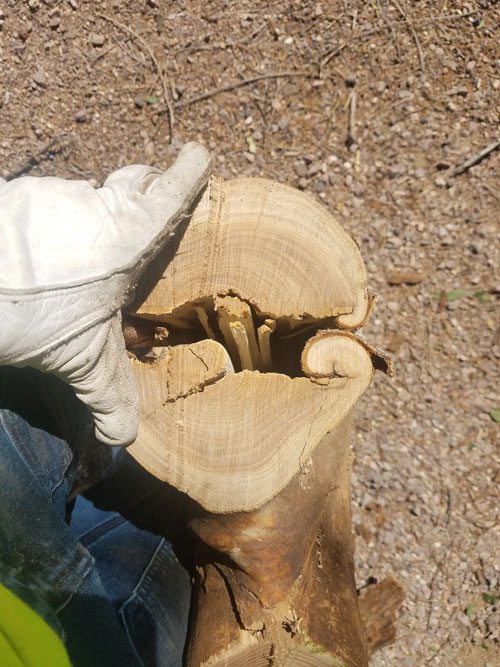Unless you have spent some time in arboriculture or around a tree nerd cough arborist cough you probably haven’t heard the term “Included Bark”. Included bark is when the bark essentially rolls in on itself creating areas of structure separation and weakness. These areas are typically seen in a co-dominant stem, and sometimes in limb structures. Included bark causes structural weakness within the stem and over time will separate the growth rings and essentially wedge the junction apart causing stem or limb failure. This separation also leaves a gap for water to get into the core of the stem, causing rot and catastrophic failure. The wind and snow we experience here in Central Oregon compounds the strain on these trees, so proper identification and maintenance is important.
Identifying:
– Noting areas of the trees on your property with co-dominant stems or limbs with a tight “V” crotch as it is more prone to develop in these regions.
– If it is a large enough area you can see bulging of the bark in the crotch and occasionally a notable split if enough weight and stress has been applied to the area.
 Management:
Management:
– Pruning: If it is noted early on in the tree’s development a properly maintained pruning regimen can manage the stress put on the weakened junction. This is accomplished by proper weight and/or height reduction, and although it will temporarily save the stem or limb it will not permanently resolve the problem.
– Cabling: The strategic placement of specially designed cables will support the canopy and reduce movement stress on the weakened stem.
– Removal: The complete removal of the stem/limb, or removal of the entire tree, is the only guaranteed way to prevent stem or limb failure.

